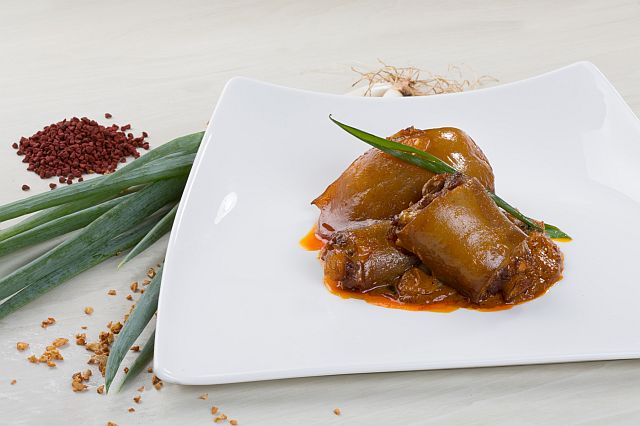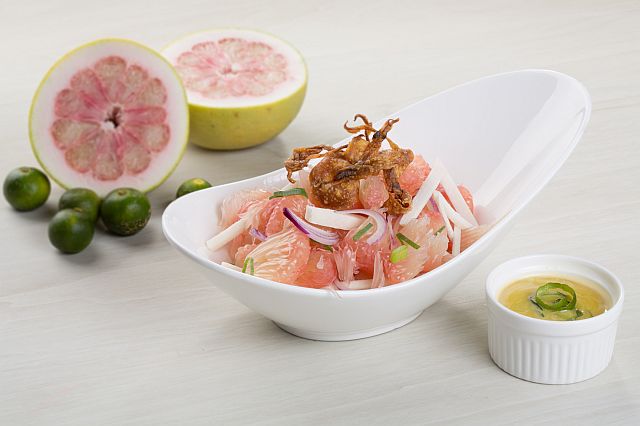
Pinaugang Balbacua
FOR 35 years now, Golden Cowrie has been synonymous to Filipino home-cooked meals just the way we remember our old-fashioned kitchens where our grandmothers dominated the culinary scene.
And it does not come as a surprise that the Kokseng family has carried on this homegrown tradition after acquiring Golden Cowrie from one of
Cebu’s respected culinary doyenne.
The brand has, in fact, grown considerably. Under its umbrella, Cebu Golden Restaurant Inc. proudly operates Golden Cowrie, Salinas, Hukad and the latest, which recently opened at the Garden Area of Ayala Center Cebu, is the Golden Cowrie Filipino Kitchen. Here, the Kokseng brothers Earl, Raymund and Vincent, assure diners that all the dishes in the three other restaurants are offered in the Golden Cowrie Filipino Kitchen.
At the helm of the product development is young housewife Christine de la Riva Kokseng, whose culinary skills was acquired from a household that loves to cook and eat. With the support of the Kokseng family whose flourishing food business has branches all over the country, Christine continues to re-interpret classic Filipino dishes. Christine is married to Kenneth who sits as General Manager for Golden Restaurant Inc.

Zarsuela de Mariscos
As we took our seats to enjoy the Opening Day Lunch, refreshing tall glasses of Agua Fresca, blended green mango and cucumber were served, which paired well with the appetizer, Cab-Cab with Smoked Bangus Pate. Cab-cab is crispy fried cassava crackers, a Boholano delicacy made from mashed cassava pulp.
The main dishes were served family style. The salads were simple but looked very appetizing, like Sizzling Chicharon and Salted Eggs with a bit of spice, Pomelo Salad and Singkamas in Calamansi dressing with crunchy dried squid. Balbacua is a Cebuano dish that I still have to appreciate. The name comes from the word “Barbacoa,” a Spanish word, which means cooking meat very slowly in open fire for several hours. Christine presents her dish as “Pinaugang Balbacua,” ox tail braised in spices, black beans, peanuts and condiments, rendered red in color with annatto seeds (achuete).
Her “Pinaupong Manok” is taken from the classic Tagalog version where a whole chicken is baked sitting on a bed of salt. Christine further bathes the chicken with boiling oil poured slowly by a laddle, rendering the skin golden and delicately crispy. Quite a laborious process! Her seafood dishes for lunch were Tahong in Coconut Milk and Zarzuela de Mariscos, a seafood stew.

Pomelo
Salad
Vegetarians will also enjoy the meatless Humba and bloodless Dinuguan. Raymund Kokseng, who was seated beside me, proudly shared the fast growing food business their family was into. I did call his attention to the condiment I was missing on the table–fish sauce or patis. Since this is a Filipino Kitchen, I suggested that the set of condiments must include this very Pinoy “sawsawan.” This umami rich fish sauce is indispensable to dishes like Sinigang, Pochero (Bulalo in Tagalog), grilled fish and meats.
Halo Halomazing capped our native lunch, a classic cooler-dessert with sweetened bananas, beans, gulaman, sago with finely shaved ice topped with leche flan and ube cream.

